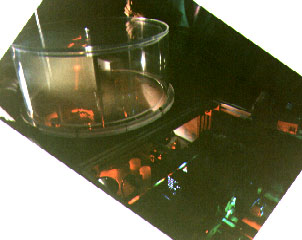
1996 Proceedings
1996 Photos
 1996 Proceedings 1996 Photos |
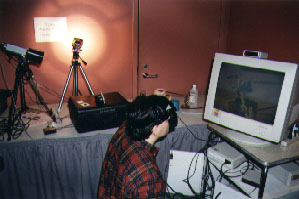
The above photograph shows a single lens 3D video camera from Visus Inc. David Drascic is putting it through it's paces by performing a teleoperation experiment.
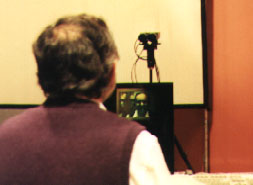
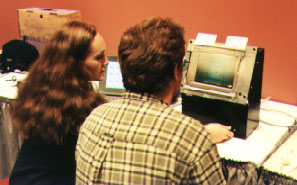
Richmond Holographic Studios demonstrated two of their auto-stereoscopic displays at the conference. These displays are based on the use of holographic optical elements. Pictured left is Michael Weissman looking at himself in 3D. Pictured right is Edwina Orr demonstrating their display connected to a computer.
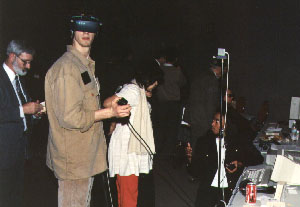
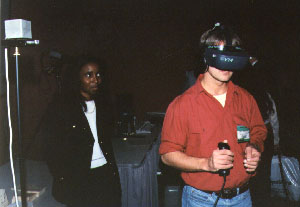
The two pictures above shows the demonstration of a 3D Audio system from Crystal River Engineering. Of course they also needed a Virtual Research VR4 HMD and head tracker to demonstrate the system fully. Unfortunately I didn't get a go...! :-(
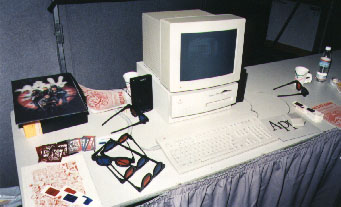
Ray Zone is known for his 3D comic books. Now he is also writing 3D computer software (also based on the anaglyph red/blue 3D technique). This table (shown above) displayed a range of his work - 3D comics, Ghostbusters 3D lenticular and the computer program. He's the only man I know whose business card can also be used as a pair of 3D glasses! Seriously!
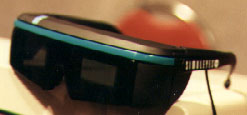
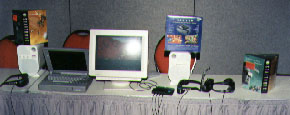
StereoGraphics demonstrated their SimuleyesVR system to show stereoscopic computer graphics on IBM-PC's. A demonstration of Descent was running on the computer. I was told that they worked closely with the makers of descent to get the amount and the quality of the stereo imagery just right. The results showed, as it was much easier on the eyes than the standard release of Descent in stereoscopic mode.
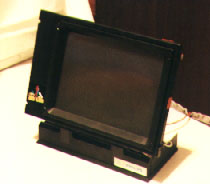
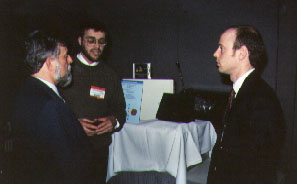
Pictured above left is the autostereoscopic LCD display being developed by Philips Research Laboratories. The system uses a lenticular lens array to generate the auto-stereoscopic image. The right hand picture shows (from left) Graham Street (Solid Vision Limited), Cees van Berkel (Philips Research Laboratories) and Jonathan Harrold (Sharp Labs of Europe).
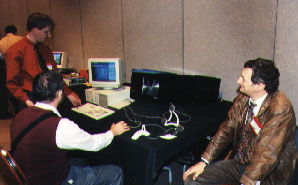
The above photograph shows the time-multiplexed color autostereoscopic display from the University of Cambridge and Infinity Multimedia. Pictured on the left is Neil Dodgson from the University of Cambridge and on the right is (I think...) John Moore also from the University of Cambridge.
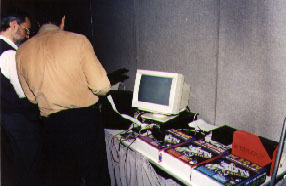
A range of 3D equipment was on display from 3DTV corporation. Michael Weissman and Michael Starks have their backs to us (shame). Easily seen in the photograph are the 3-D MAGIC, PC 3-D TV and 3-D THEATRE packages. They provide a pair of LCD shutter glasses for use with your IBM-PC or your home television. Different packages provide different hardware and software. Michael also had his spacestation equipment on display for different variations of field-doubling, multiplexing and de-multiplexing.
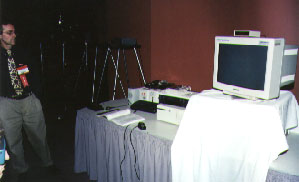
Pictured above is Baxter Garcia from Automated Medical Products Corp. with the company's 2D to 3D conversion system based on spatio-temporal interpolation.
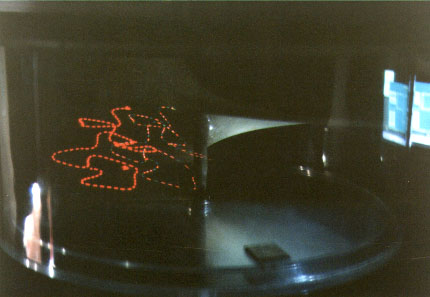
On display in the main Electronic Imaging Symposium exhibition hall of the Electronic Imaging Symposium was a Volumetric Display (fondly called Felix the Helix) from Technishe Universitat Braunshweig. A specially shaped surface rotates under a hood. A laser then lights the disk when it passes through particular locations in the volume. Addressed correctly the laser can generate a three-dimensional image, with full walk-around capability. The photograph above shows a closeup of the rotating helix which is being drawn on by a red laser. Part of the helis is just visible on the right as it was being illuminated by a strobe. The photograph below shows the cylinder in which the helix rotates. The laser optics of the system are visible on the lower right of the photograph.
